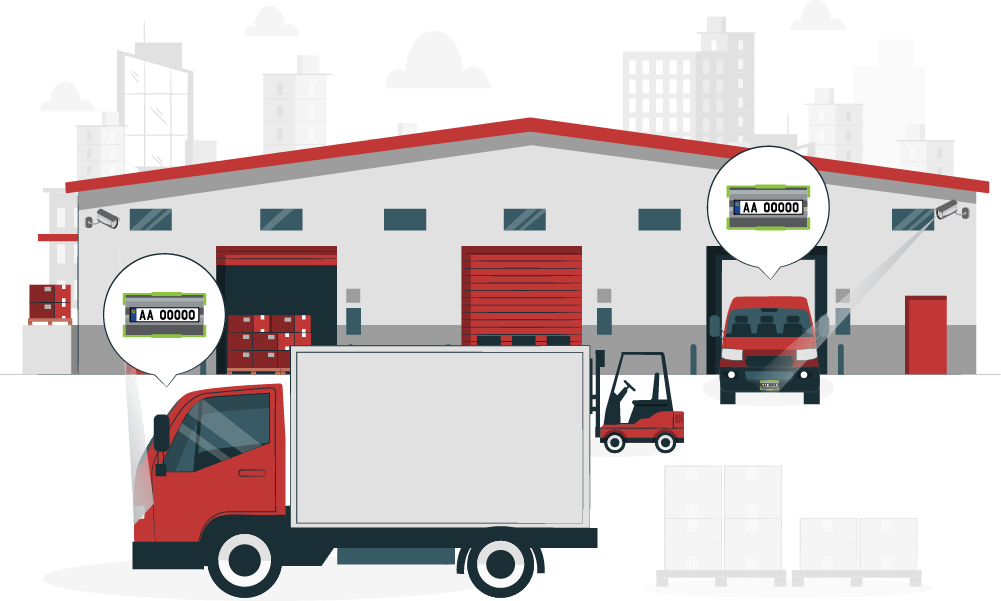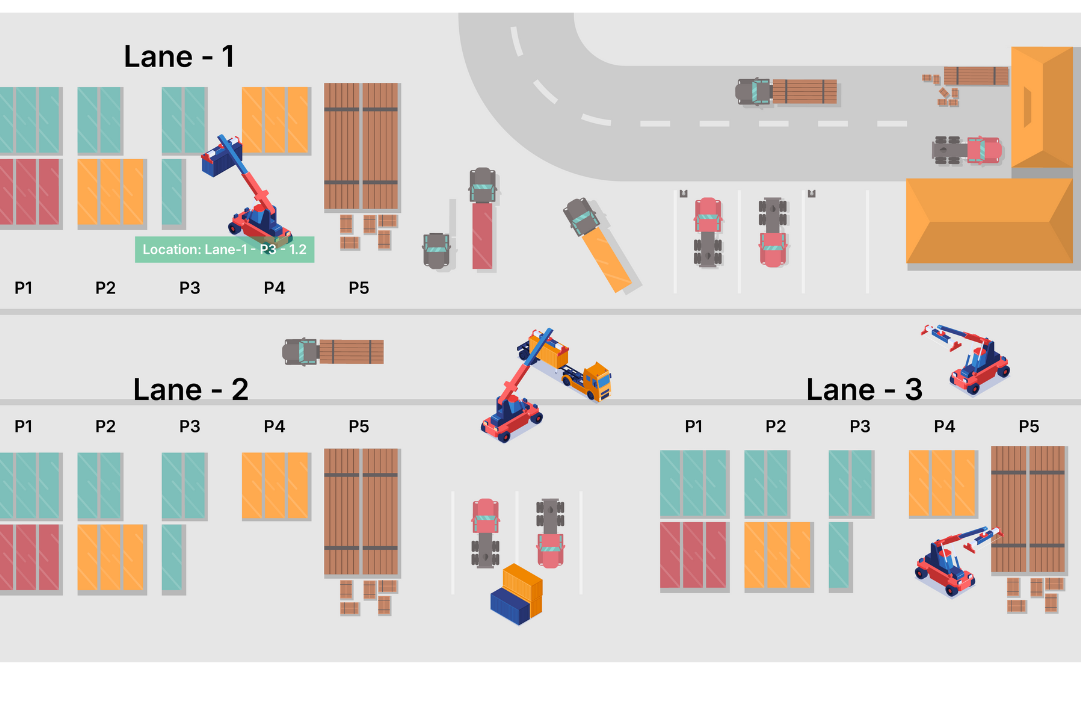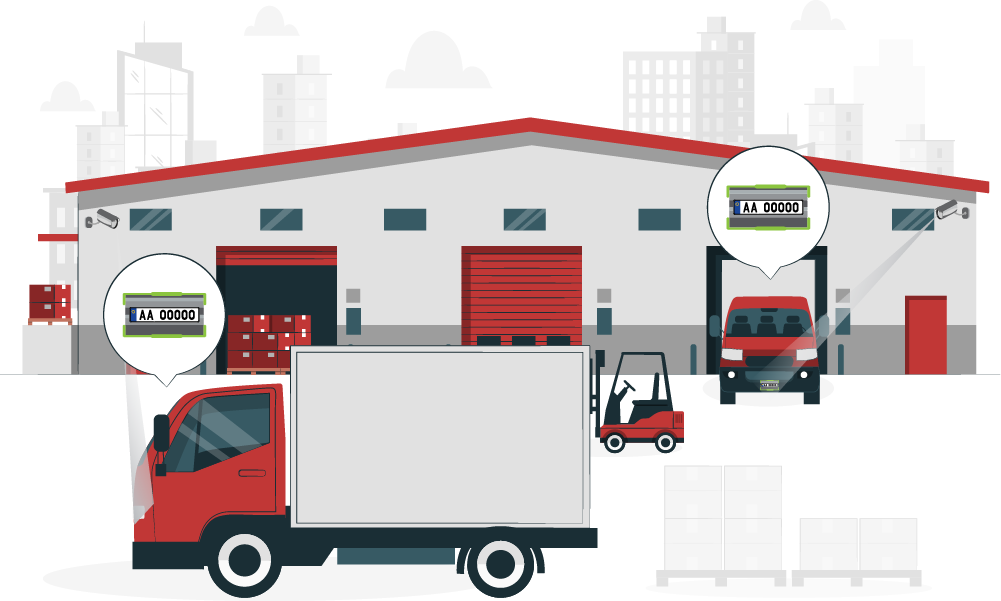How AI-Powered OCR & ANPR Are Transforming the Transportation & Logistics Industry

Ruchir Kakkad
CEO & Co-founder

Every second, millions of goods traverse ports, highways, city roads, and warehouse facilities. It is powering everything from household e-commerce deliveries to global manufacturing operations.
Behind this intricate system is a lots of amount of paperwork, identification, verification, and human labour. For decades, the industrys backbone has been manual checks, handwritten logs, and physical approvals. But in an increasingly digital, globalized economy where speed, traceability, and transparency define success, such outdated practices are no longer sufficient.
This is where Artificial Intelligence (AI) steps in, not as a futuristic add-on, but as an operational necessity. Specifically, two AI-powered computer vision technologies, Optical Character Recognition (OCR) and Automatic Number Plate Recognition (ANPR), are transforming the very DNA of transportation and logistics. These arent just new tools, theyre building blocks for a smarter infrastructure.
We are witnessing how businesses in India and across the globe are deploying OCR and ANPR to increase throughput, minimize losses, and reduce operational friction in unprecedented ways.
The sheer volume and complexity of todays logistics make manual intervention not just inefficient, but a liability. For example, one misplaced container can result in shipment delays costing millions in demurrage fees. A missed license plate on a blacklisted truck can pose a serious security threat. In an industry where margins are sharp-thin and timelines are tight, automation is no longer an option, it is the competitive edge.
According to a Deloitte report, transportation inefficiencies contribute to over $500 billion in lost revenue globally every year. Much of this stems from human error, slow documentation, and lack of real-time tracking. When OCR and ANPR systems are implemented, these gaps start closing rapidly. By transforming static footage and printed documents into actionable insights, these technologies enable a shift from reactive to proactive logistics management.
This paradigm shift falls under what we call computer vision transport solutions, a fusion of advanced AI, high-resolution imaging, and integrated software that brings visual intelligence to every aspect of the logistics chain. These solutions are not only scalable but highly customizable, making them viable across ports, roads, warehouses, and even public city infrastructure.
To appreciate the disruption they bring, one must first understand what OCR and ANPR actually do.
Optical Character Recognition (OCR) converts printed or handwritten alphanumeric text into machine-readable data. In the logistics context, it reads container codes, cargo labels, package barcodes, and shipping IDs. OCR automates these readings in milliseconds, without the need for manual checking, pen-and-paper entries, or revalidation.
Automatic Number Plate Recognition (ANPR) is a subset of computer vision that reads and identifies vehicle license plates. The system uses specialized cameras and deep learning models to interpret characters on license plates under varied conditions, including speed, glare, and low light. It logs, tracks, and cross-references this data with backend systems to allow or deny access, trigger alerts, or enable route mapping.
When we talk about the ANPR in transportation industry, we are referring to its transformative ability to manage vehicle traffic at ports, on highways, inside warehouse premises, and even in cross-border freight corridors. These systems deliver accuracy, speed, and automation that surpass human capabilities.

Ports are the frontline of international trade. Indias ports, for instance, manage over 1.6 billion metric tonnes of cargo annually, moving through containers that must be identified, recorded, and validated at multiple checkpoints. This process, until recently, involved clipboard-wielding staff manually entering container numbers, often inaccurately, especially in high-traffic lanes or under poor lighting.
With the introduction of OCR container scanning ports, this process is entirely digitized. Cameras at gate terminals capture the image of an incoming container, extract its alphanumeric ID using OCR, and verify it against the manifest in the ports backend database. The result? Entry and exit times shrink dramatically. For example, WebOccults OCR deployments at western Indias port terminals reduced average gate clearance times from over 20 minutes to just under 7 minutes. It also led to a 90% reduction in entry/exit errors.
OCR also plays a pivotal role in customs clearance, yard management, and vessel loading/unloading accuracy. It enables container damage detection through image analysis, verifies check digits as per ISO 6346 standards, and even creates a full audit trail with time-stamped photos for compliance.

While OCR handles static assets like cargo, ANPR in the transportation industry tackles moving ones, primarily vehicles. The days of recording vehicle entry through registers are over. ANPR systems capture a vehicles number plate at the gate, verify it within seconds, and automatically log the entry into the warehouse, terminal, or parking facility.
But ANPRs power extends far beyond gate automation. Realtime license plate recognition logistics is now an operational standard across multiple industries. These systems enable:
In WebOccults deployment, ANPR-based checkpoints led to a 38% improvement in fleet compliance, ensuring only compliant trucks accessed the sensitive zones.
Globally, ANPR systems are being connected to national databases for vehicle compliance, stolen vehicle alerts, and even taxation systems. In the UK, for example, ANPR feeds directly into congestion pricing and emissions-based tolling models, improving both revenue and sustainability outcomes.

Warehouses are evolving from static storage spaces to dynamic, intelligent nodes in the supply chain. And OCR is one of the key drivers of this transformation. With thousands of products flowing in and out daily, inventory accuracy is a huge challenge. AI-powered inventory tracking transportation systems make it possible to scan and log every product, pallet, or package label in real time, without manual touchpoints.
This enables warehouse managers to:
Moreover, by tagging product images with barcodes, QR codes, and timestamps, OCR allows for instant traceability, a key factor in pharma and perishable goods logistics.
Urbanization has made traffic management and law enforcement more complex. With millions of vehicles moving daily through city intersections, its impossible for humans to monitor every violation or entry event. This is where smart city ANPR deployment becomes essential.
Municipalities are installing ANPR cameras at strategic junctions to:
In cities like Pune and Surat, ANPR is now integrated with municipal dashboards that issue e-challans directly to registered vehicle owners. Additionally, cities are starting to use ANPR data for urban planning, analyzing vehicle patterns, peak congestion hours, and route optimization.
As the logistics industry embraces autonomy, the need for visual comprehension by machines grows. Autonomous vehicle OCR adoption is enabling self-driving cargo vehicles to navigate, authenticate, and interact with their environment.
OCR helps such vehicles:
Combined with ANPR, these autonomous systems can recognize peer vehicles, communicate wirelessly with traffic infrastructure, and operate in low-light conditions using thermal imaging.
WebOccult is currently partnering with a hardware firm to pilot an AI-powered last-mile delivery vehicle for gated campuses, where OCR-driven route validation and ANPR-based access control will operate entirely without human input.
The real value of OCR and ANPR lies not just in data capture, but in meaningful integration. These technologies must connect with Transport Management Systems (TMS), Warehouse Management Systems (WMS), Enterprise Resource Planning (ERP), and security infrastructure.
At WebOccult, we build end-to-end stacks as part of our full-fledged computer vision transport solutions:
This approach ensures that our clients get a complete digital command center, not just a data pipe. It also facilitates compliance, documentation, and performance benchmarking, all through visual intelligence.
AI vision is not the future. It is the present. And businesses that delay its adoption risk not just inefficiency, but irrelevance. Whether you operate a port, run a smart warehouse, manage fleets, or build urban infrastructure, OCR and ANPR will be foundational to your success.
At WebOccult, were helping clients move from reactive to predictive, from error-prone to error-free, and from manual to autonomous, one visual frame at a time.
If you’re ready to transform how you track, verify, and automate, lets build your AI vision infrastructure together.